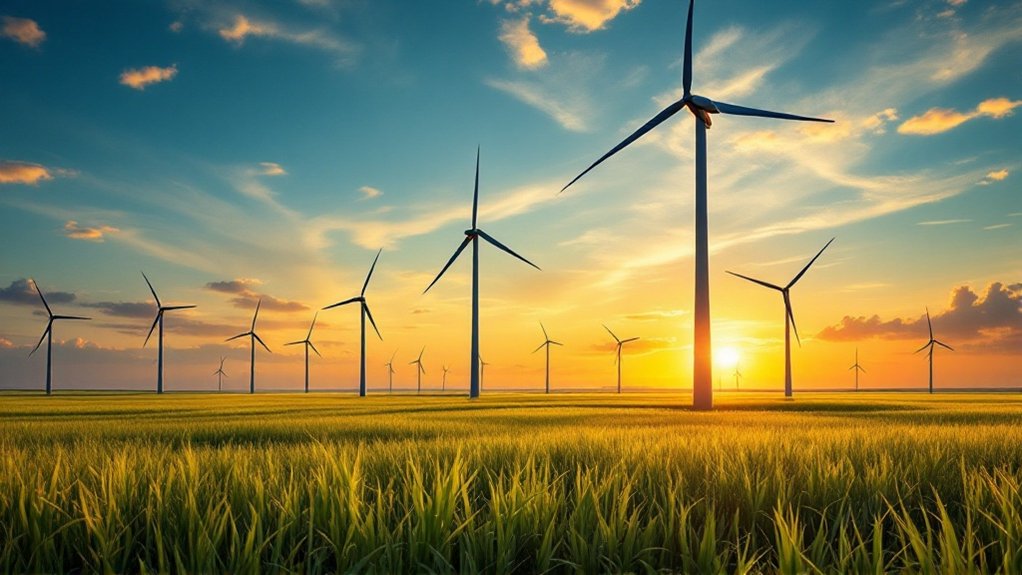
Why Wind Turbine Technology Matters for Future Energy
Wind turbine technology stands at the forefront of renewable energy solutions. It offers a method to generate clean electricity while addressing climate change concerns. The integration of advanced designs and smart technologies enhances efficiency and output. As the world shifts towards sustainable energy sources, understanding the multifaceted benefits of wind turbines becomes essential. Yet, several challenges and opportunities lie ahead that could shape their future role in the energy landscape.
The Basics of Wind Turbine Technology
Wind turbine technology represents a crucial advancement in renewable energy generation. At its core, a wind turbine converts kinetic energy from wind into mechanical power, which is then transformed into electricity. The main components include the rotor blades, which capture wind energy, the nacelle housing the generator, and the tower that elevates the turbine for prime wind exposure. Turbines can be classified into horizontal-axis and vertical-axis designs, each serving specific applications. The efficiency of wind turbines largely depends on their location, wind speed, and design parameters. As technology evolves, innovations such as advanced materials, enhanced aerodynamics, and smart grid integration continue to improve performance and reliability, making wind energy a cornerstone of sustainable electricity generation in the modern energy landscape. Furthermore, renewable energy sources such as wind power are critical in reducing greenhouse gas emissions and combating climate change.
Environmental Benefits of Wind Energy
As the demand for clean energy sources increases, the environmental benefits of wind energy become increasingly evident. Wind energy markedly reduces greenhouse gas emissions, contributing to the mitigation of climate change. Unlike fossil fuels, wind turbines generate electricity without releasing harmful pollutants, thereby improving air quality and reducing respiratory diseases associated with air pollution. Additionally, wind energy conserves water resources, as it requires minimal water for operation compared to traditional power plants, which often consume large amounts for cooling. The land used for wind farms can also accommodate agricultural activities, promoting dual land use and preserving natural habitats. Overall, the shift towards wind energy not only supports sustainable practices but also fosters a healthier environment for future generations. Furthermore, embracing renewable energy is essential for creating a sustainable future.
Economic Impact: Job Creation and Industry Growth
A significant increase in job opportunities and industry growth is associated with the expansion of wind energy technology. As investment in wind power rises, new roles emerge in manufacturing, installation, maintenance, and operations. This growth not only fosters direct employment but also stimulates ancillary industries, including transportation and raw material suppliers. Regions that embrace wind energy often witness revitalization, attracting skilled labor and encouraging local economies to diversify. Additionally, as more companies enter the market, competition enhances innovation, further driving down costs and increasing efficiency. The wind sector’s expansion ultimately contributes to a more resilient economy, helping communities adapt to the shifting landscape of energy production while promoting sustainable practices. This transformation underscores the importance of wind technology in shaping future economic landscapes. Furthermore, remote work trends are influencing how industries, including wind energy, approach workforce management and collaboration in a rapidly changing environment.
Wind Energy and Energy Independence
Wind energy plays a vital role in reducing dependence on foreign oil, enhancing national security and economic stability. By investing in local wind energy projects, communities can benefit from job creation while fostering a sustainable energy future. Additionally, the reliability of renewable energy sources contributes to a more stable and resilient energy grid. Furthermore, the promotion of social equity through renewable energy initiatives can help alleviate the economic disparities often exacerbated by traditional energy systems.
Reducing Foreign Oil Dependence
Shifting to wind energy plays an essential role in reducing foreign oil dependence and enhancing energy independence. By harnessing wind power, nations can lessen their reliance on imported fossil fuels, which often fluctuate in price and availability due to geopolitical tensions. Wind energy provides a stable, domestic source of power that can be integrated into existing energy grids. This shift not only mitigates the economic vulnerabilities associated with oil imports but also promotes energy security by diversifying the energy portfolio. Additionally, as technological advancements lower the costs of wind turbine installation and maintenance, countries can invest in sustainable infrastructure that supports long-term energy strategies. Ultimately, embracing wind energy contributes to a more self-sufficient and resilient energy future.
Local Job Creation Benefits
Significant local job creation arises from the expansion of wind energy initiatives, which directly supports energy independence. As communities invest in wind farms, a variety of employment opportunities emerge, including manufacturing, construction, and maintenance positions. Local economies benefit as these jobs often require skilled labor, leading to training programs that enhance the workforce. Additionally, the presence of wind energy projects can stimulate local businesses, as workers and contractors contribute to the economy through increased spending. By fostering job growth in the renewable sector, regions can diminish reliance on imported fossil fuels, promoting self-sufficiency. This shift not only strengthens local economic resilience but also aligns with broader goals of sustainable energy development and environmental responsibility.
Renewable Energy Stability
The development of wind energy not only fosters local job creation but also plays an essential role in enhancing energy independence. By harnessing wind resources, nations can reduce their reliance on imported fossil fuels, thereby promoting energy security. Wind energy contributes to a diversified energy portfolio, mitigating the risks associated with fluctuating global oil prices and geopolitical tensions. In addition, as technology advances, wind turbines become more efficient, increasing the stability of renewable energy sources. This reliability aids in maintaining a consistent energy supply, even as demand fluctuates. The integration of wind energy into the grid also encourages investment in energy storage solutions, additionally stabilizing energy systems. Ultimately, wind energy paves the way for a sustainable, self-reliant energy future.
Technological Advancements in Wind Turbines
As the demand for renewable energy increases, technological advancements in wind turbines are evolving rapidly to enhance efficiency and output. Innovations such as larger rotor diameters and taller towers allow turbines to capture more wind energy, greatly increasing their energy production capacity. The integration of smart sensors and predictive maintenance technologies enables real-time monitoring, optimizing performance and reducing downtime. Additionally, advancements in materials science have led to lighter, more durable blades that withstand harsh environmental conditions. Offshore wind farms are also benefiting from floating turbine technology, which expands the potential for energy generation in deeper waters. Overall, these developments are vital for maximizing the potential of wind energy, making it a more viable and competitive source of renewable power. Practicing mindfulness techniques can also improve focus and concentration, which is essential for engineers and teams working on these advancements.
Challenges Facing Wind Energy Adoption
While the advancements in wind turbine technology promise a brighter future for renewable energy, several challenges hinder the widespread adoption of wind energy. One significant obstacle is the intermittent nature of wind, which complicates energy reliability and requires complementary storage solutions. Additionally, the initial capital costs for installing wind farms can deter investment, especially in regions with limited financial resources. Environmental concerns, such as the impact on local wildlife and land use, also create resistance from communities. Moreover, infrastructure limitations and inadequate transmission networks can restrict the distribution of generated energy. These factors collectively pose substantial barriers to the integration of wind energy into the broader energy landscape, necessitating innovative solutions and strategic planning to overcome them.
The Role of Policy in Promoting Wind Energy
Effective policy frameworks play an essential role in addressing the challenges that hinder wind energy adoption. Governments can incentivize investment in wind technology through tax credits, grants, and subsidies, making projects more financially viable. Additionally, streamlined permitting processes can reduce the time and costs associated with project development, encouraging developers to pursue wind energy initiatives. Policies promoting renewable energy standards and mandates also create a market for wind energy, driving competition and innovation. Moreover, public awareness campaigns can educate citizens about the benefits of wind energy, fostering community support. Overall, effective policies not only enhance the economic feasibility of wind energy projects but also cultivate a more favorable environment for their widespread implementation, ultimately contributing to a sustainable energy future.
The Future of Wind Energy: Trends and Innovations
The future of wind energy is shaped by advanced turbine designs that enhance efficiency and output. Additionally, the expansion of offshore wind farms presents significant opportunities for harnessing energy in untapped areas. Innovations in energy storage solutions further promise to optimize the integration of wind power into the broader energy grid.
Advanced Turbine Designs
As the demand for renewable energy sources continues to grow, advanced turbine designs are emerging as pivotal innovations in the wind energy sector. These designs prioritize efficiency and sustainability, incorporating larger rotor diameters and taller towers to capture more wind energy at varying heights. Innovations such as variable pitch blades enhance energy capture and improve performance in turbulent conditions. Additionally, advancements in materials, including lighter composites, contribute to increased durability and reduced maintenance costs. Integrating smart technology allows for real-time monitoring and optimization of turbine performance. Moreover, modular designs facilitate easier transportation and assembly, making installations more efficient. Collectively, these advanced turbine designs are setting the stage for a more resilient and effective wind energy future.
Offshore Wind Expansion
With the increasing urgency to shift to sustainable energy sources, offshore wind expansion is poised to play an essential role in the future of wind energy. This sector is characterized by the deployment of larger and more efficient turbines in deep waters, harnessing stronger and more consistent wind currents. Countries around the globe are investing notably in offshore wind farms, recognizing their potential to provide substantial energy output while minimizing land-use conflicts. Innovations in floating turbine technology enable installations in previously inaccessible areas, increasing production capacity. Additionally, the scalability of offshore projects promises to reduce costs over time, making wind energy more competitive. As environmental regulations tighten, offshore wind expansion will likely become a cornerstone for achieving renewable energy targets.
Energy Storage Solutions
Advancements in energy storage solutions are crucial for the future of wind energy, enabling more efficient integration of renewable sources into the power grid. As wind energy production can be intermittent, effective storage systems allow excess energy generated during peak wind conditions to be saved for later use. Technologies such as lithium-ion batteries, pumped hydro storage, and emerging options like solid-state batteries are being explored to enhance capacity and reliability. Additionally, innovations in grid-scale storage can mitigate fluctuations in energy supply, ensuring a consistent power flow. By improving energy storage capabilities, the wind energy sector can better align with demand, reduce reliance on fossil fuels, and contribute to a more sustainable and resilient energy landscape.
Frequently Asked Questions
How Do Wind Turbines Affect Local Wildlife Populations?
Wind turbines can impact local wildlife populations by altering habitats and posing collision risks to birds and bats. However, studies indicate that with careful placement and design, negative effects can be mitigated considerably.
What Is the Lifespan of a Typical Wind Turbine?
The lifespan of a typical wind turbine ranges from 20 to 25 years. Factors such as maintenance, technological advancements, and environmental conditions can influence this duration, impacting both efficiency and economic viability over time.
Can Wind Turbines Be Installed in Urban Areas?
Wind turbines can be installed in urban areas, though challenges such as space constraints, noise, and aesthetic concerns arise. Innovative designs and smaller models may help integrate turbines into cityscapes effectively, promoting renewable energy generation.
How Are Wind Turbine Sites Chosen?
Wind turbine sites are chosen based on factors such as wind patterns, land availability, environmental impact assessments, proximity to power grids, and community acceptance. These considerations guarantee ideal energy generation and minimal disruption to surrounding areas.
What Happens to Wind Turbines at the End of Their Life Cycle?
At the end of their life cycle, wind turbines are typically dismantled. Components may be recycled or repurposed, while non-recyclable materials are disposed of responsibly. This process aims to minimize environmental impact and promote sustainability.
Conclusion
In summary, wind turbine technology plays a pivotal role in shaping a sustainable energy future. By harnessing renewable wind resources, it not only mitigates environmental impacts but also fosters economic growth and energy independence. As advancements in turbine design and integration of smart technologies continue to evolve, the potential for increased efficiency and wider adoption becomes evident. Addressing challenges through supportive policies will be essential in realizing the full benefits of wind energy for a cleaner, more resilient planet.



